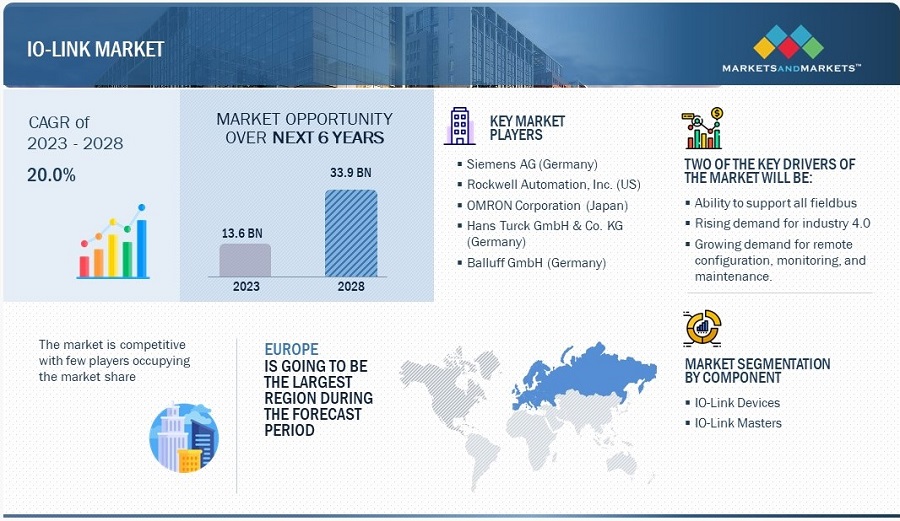The report "Human Machine Interface (HMI) Market by Product (Hardware (Basic HMI, Advanced PC Based HMI, Advanced Panel Based HMI) and Software(On Premise HMI and Cloud Based HMI), Configuration (Embedded HMI, Standalone HMI) and Region - Global Forecast to 2027" The global HMI market size is estimated to be USD 4.9 billion in 2022 and is projected to reach USD 7.3 billion by 2027, at a CAGR of 8.1%. Increasing number of government initiatives to promote the adoption of operational technologies and rapidly growing adoption of industrial automation in the manufacturing processes are major factors driving the growth of the HMI market. Additionally, growing demand for safety compliance automation solutions is another key driver for the market.
• Informational PDF Brochure :-Browse 148 market data Tables and 53 Figures spread through 210 Pages and in-depth TOC on "Human Machine Interface (HMI) Market and Region - Global Forecast to 2027"
View detailed Table of Content here - https://www.marketsandmarkets.com/Market-Reports/human-machine-interface-technology-market-461.html
HMI software to grow at the highest CAGR during the review period.
Offline deployment provides a high degree of security and safety for the data as the entire infrastructure required for HMI solutions is deployed at the user’s premises. It also offers a stable production environment, as it gives full control over software updates and other technical complications. Small enterprises prefer cloud-based HMIs over on-premise solutions as they require a low initial cost compared to on-premise HMI solutions. Increasing efficiency of production processes and improved reliability are key advantages of HMI software.
Embedded HMI held the largest share and is projected to grow at the highest CAGR during the review period.
Embedded HMIs are combined with more powerful hardware and software platforms to use the device capabilities to their fullest extent. Furthermore, a connected embedded platform is a part of an intelligent system; it is connected to a network that enables easy communication between 2 machines and provides easy access to an operator. Embedded HMIs improve energy efficiency and can be easily deployed as they occupy much less space as compared to traditional HMIs.
Oil & gas held the largest share of the process industry segment in 2021.
The supply chain of the oil and gas industry, from exploration through delivery, accommodates various automated technologies, including HMI solutions. In addition, stringent government regulations pertaining to safety in oil and gas, along with the need to drive down costs, fuel the adoption of HMIs in the industry. Environmental conditions in oil and gas plants are very harsh, which makes rugged HMIs well-suited for applications in the oil and gas industry.
Automotive held the largest share and is projected to grow at the highest CAGR during the review period.
Increasing demand for automotive in developing countries, technological innovations in the automotive industry, such as electric cars, fuel-efficient cars, connected cars, and growing competition in the market, are expected to drive the HMI market for the automotive industry. Technological progress, such as the development of new software solutions with advanced capabilities, brings more functionality, ease of use, and lower cost of automation products, which have further led to the evolution of HMI software offering, thereby increasing their adoption in the automotive sector.
North America held the largest share in 2021 and Asia Pacific is projected to grow at the highest growth rate during the review period.
The industrial, automotive, power, oil & gas, pharmaceutical, and healthcare sectors are integrating HMI with data analytics to improve performance and reduce overall operational costs, which is promoting the growth of the HMI market in North America. In addition, the presence of major players in the region provides unprecedented leverage for the growth of the HMI market. The major factors driving the growth of the HMI market in Asia Pacific include continuous advancements and technological innovations in various industries; economic development in China, Japan, and India; escalating infrastructural developments in India and other countries in Southeast Asia; and increasing foreign investments in the region.
Major companies operating in the HMI market include Rockwell Automation Inc. (US), ABB (Switzerland), Siemens AG (Germany), Schneider Electric SE (France), Honeywell International Inc. (US), Advantech Co., Ltd. (Taiwan), Emerson Electric Co. (US), General Electric Co. (US), Mitsubishi Electric Corporation (Japan), and Yokogawa Electric Corporation (Japan).
About MarketsandMarkets™
MarketsandMarkets™ provides quantified B2B research on 30,000 high growth niche opportunities/threats which will impact 70% to 80% of worldwide companies’ revenues. Currently servicing 7500 customers worldwide including 80% of global Fortune 1000 companies as clients. Almost 75,000 top officers across eight industries worldwide approach MarketsandMarkets™ for their painpoints around revenues decisions.
Contact:
Mr. Aashish Mehra
MarketsandMarkets™ INC.
630 Dundee Road
Suite 430
Northbrook, IL 60062
